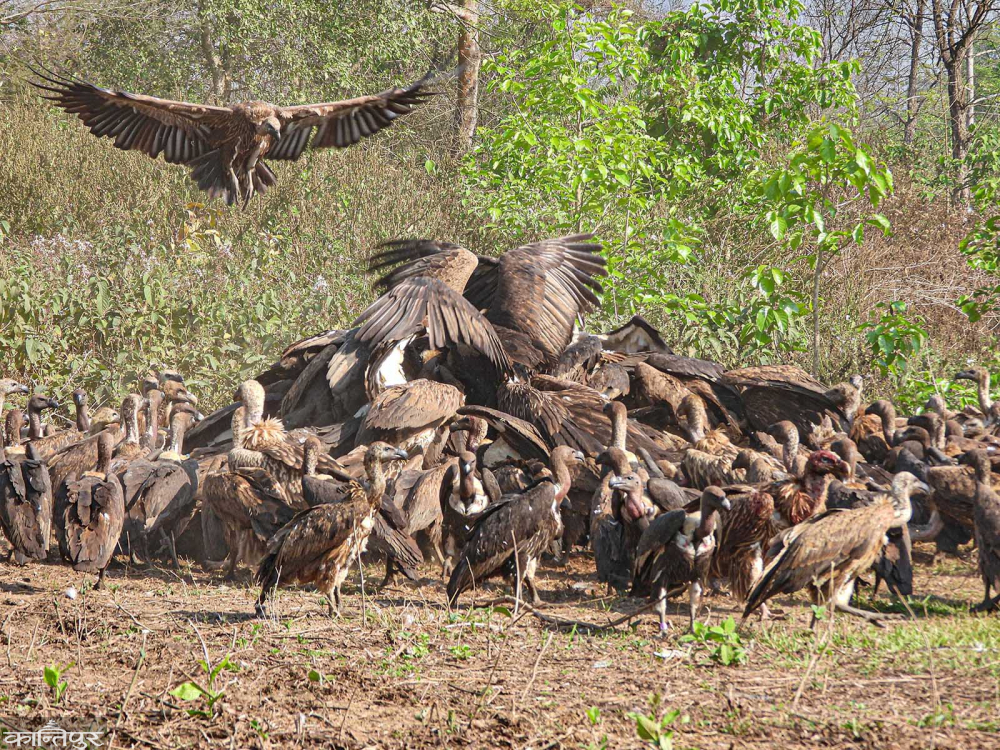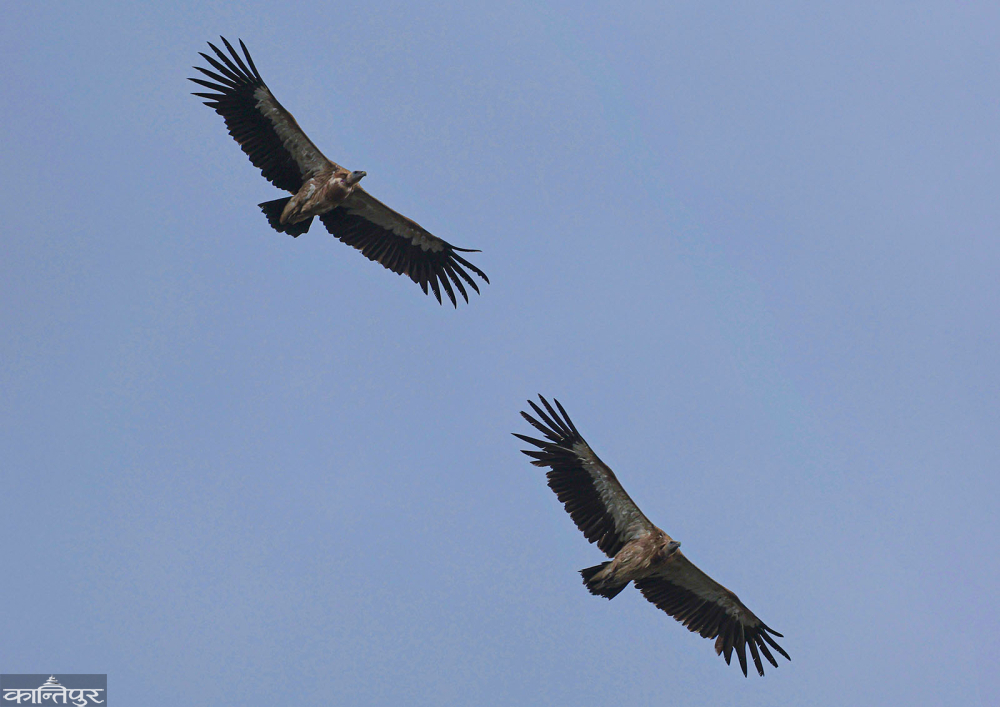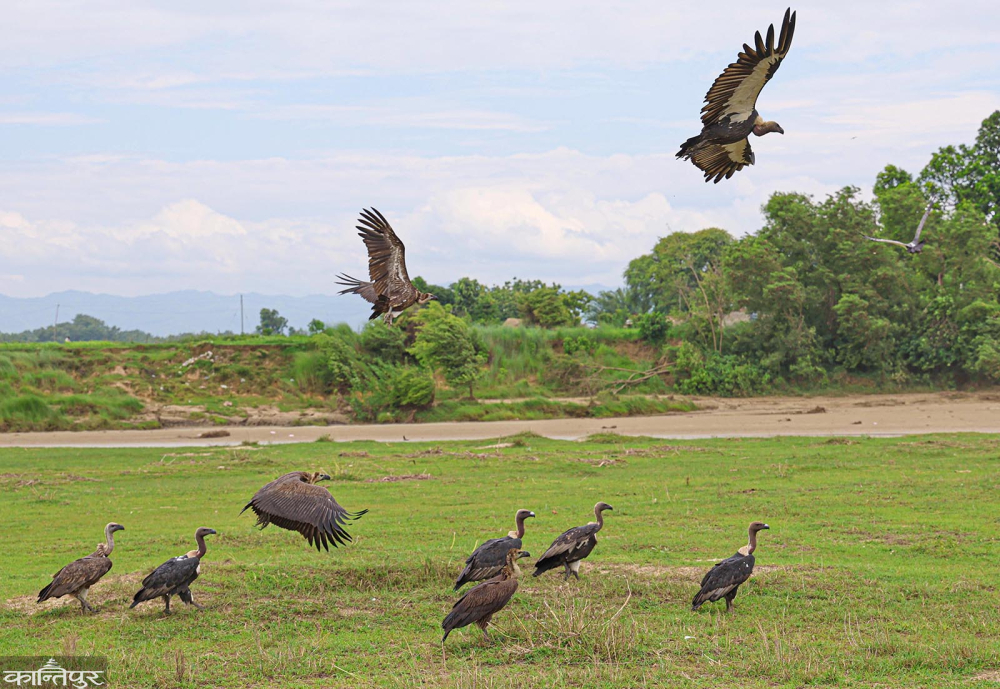The 'parent' bird is a vulture

We use Google Cloud Translation Services. Google requires we provide the following disclaimer relating to use of this service:
This service may contain translations powered by Google. Google disclaims all warranties related to the translations, expressed or implied, including any warranties of accuracy, reliability, and any implied warranties of merchantability, fitness for a particular purpose, and noninfringement.




The voice of the vulture is not sweet, nor does it look good. Some consider the vulture as a violent, dirty and disgusting bird. Some people also consider it inauspicious when they see it in dirt and garbage. However, if you look at the stealth and ecological importance of the sino khan, it never seems like that.

Although the vulture is a predatory bird, it is considered the priest of non-violence as it eats the carcasses of dead animals without hunting. Bird and wildlife specialist Dr. Vultures are providing good guardianship to leopards and tigers by protecting them from diseases by eating dead poisonous insects in the forest, intermediate and protected areas and in and around the park. Hemsagar Baral explains.
'Tiger cheetahs may eat poisoned food when they are unable to hunt and have no food,' he says, 'That food is not wildlife food . Tiger leopards can get sick after eating that poisonous food . In this way, vultures play the role of guardians to protect tigers and leopards due to their ability to digest contaminated food.'
Conservationists have become excited as the number of vultures has gradually increased across the country due to the impact of conservation and awareness. In this context, the 16th International Vulture Awareness Day is being celebrated worldwide on September 7. Although the beak, naked and long neck are hideous and ugly, the vulture is a bird that has a great role in the environment.
The vulture of nature plays an important role in making the environment pollution-free, odor-free and disease-free by eating animal waste and discarded meat. Carnivores eat only about 36 percent decaying flesh and skeletons. However, vulture expert Krishna Prasad Bhushal said that by eating most of the rotten meat and skeletons, the environment is free from pollution.
In the 1990s, there was an unnatural and dramatic 91 percent decline in the number of vultures in South Asian countries including Nepal and India. Later, the conservation efforts, programs and plans started by the government/non-government sector seem to be increasing the number of vultures. After banning the use, production, import and sale of the painkiller diclofenac drug used in animal treatment, which is the cause of vulture destruction, in Nepal since 063 June 23, the vulture destruction has decreased.

Experts say that the highly acidic juice in the vulture's stomach can easily digest rotten meat with various harmful germs . However, in the absence of a vulture, the discarded sino rots. There is a risk of infectious diseases such as rabies, plague, measles, cholera, and diarrhea spreading to humans through dogs, foxes, rats, and flies that eat these small animals. Similarly, livestock can transmit anthrax, brucellosis and tuberculosis.
There are 23 species of vultures in the world and 9 species in South Asia including Nepal. A vulture, which can see up to eight times as far as a human, eats one kg of food in an average of three days. The vulture flies up to 300 kilometers in search of Sino . A study in Africa found that one vulture contributes $11,000 to China's sanitation.
vulture conservation officer Ankil Bilas Joshi of the Bird Protection Association (BICN) said that vultures are more than natural scavengers. It plays an important role in removing bacteria, viruses and disease-causing dead animals from the environment. "If there are no vultures, the disease can spread," he said, "that's why the importance of vultures is unlimited." Although the drug has been banned, similar drugs like ketoprofin, nimoslide and aciclofenac are still in use. This is also affecting the vulture.
Even though the Department of Drug Administration has been written to stop the use of these drugs in animal treatment, the ornithologists say that it has not been stopped yet. Likewise, the practice of using poison to kill animals such as dogs, foxes and leopards that cause distress to livestock in villages has also added to the problem . Vultures have also died due to pesticides.
Apart from that, scientific research on various aspects of vultures, monitoring of vultures released from the breeding center into the natural environment, provision of safe food and habitat protection are not effective, said vulture specialist Bhusal.

According to him, the vulture is also an indicator of ecological health. While the presence of the vulture is good for keeping the ecological cycle, biological diversity and human race healthy, there has not been enough initiative in its conservation. Although the Bird Protection Association has been involved, other stakeholders have ignored it .
Therefore, the locals are not so aware of the importance and protection of vultures. In the 1980s, there were 10 to 1.6 million vultures in Nepal, now there are around 20,000. From 2002 to 2011, a survey conducted on the East-West Highway showed that the Dunger Vulture and the Little Gray Vulture decreased by 91 percent and 96 percent.
Due to such terrible destruction, the IUCN has placed the Dungar, small gray, golden and long-chinned vulture among the 9 species of vultures in Nepal as critically endangered . The white vulture is listed as endangered, the Himalayan, Raj and Hadfor vulture as near threatened. And gray vultures are in normal condition . Critically endangered species have a 50 percent chance of extinction in the next 10 years.
Among the vultures found in Nepal, only 6 species of vultures make nests and carve babies. Dungar, small brown and golden vultures are species that make nests in trees, while Himalayan, Hadfor and white vultures make nests in fences . Like other bird species, male and female vultures cannot be easily distinguished.

vultures mate for life . Males work together to build nests, hatch and raise their young. Other species of vultures lay only one egg per year (a breeding season), except for the bald eagle and some cases of white vultures. There is a statistic that only 70 percent of the chicks cut by vultures can grow.
 प्रकाशित : भाद्र २२, २०८१ १८:५१
प्रकाशित : भाद्र २२, २०८१ १८:५१

 २२.१२°C काठमाडौं
२२.१२°C काठमाडौं














